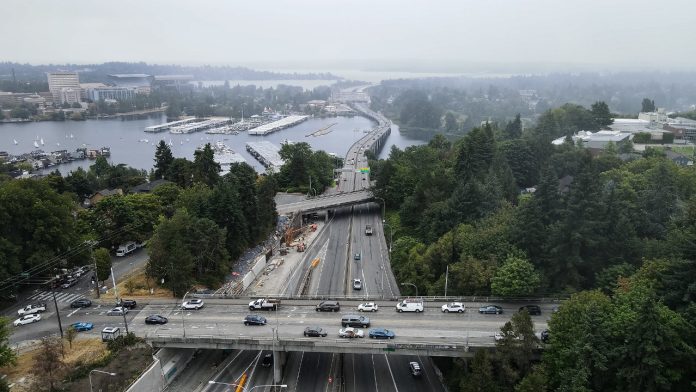
A 70% cost overrun is jeopardizing the Roanoke lid and the bike and pedestrian benefits it would bring.
A megaproject that was set to transform the area around Seattle’s North Capitol Hill neighborhood with a new highway lid over State Route 520 has hit a major snag, with a funding shortfall that could significantly impact the project’s timeline. The SR 520 Portage Bay and Roanoke Lid Project, being managed by the Washington State Department of Transportation (WSDOT), was originally set to start construction next year, at around the same time that work wraps up on Seattle’s first highway lid over 520, in Montlake.
But when bids were solicited by WSDOT earlier this year, the entire project, which also includes the replacement of two seismically vulnerable bridges across Seattle’s Portage Bay and was originally projected to cost $812 million, received its best bid at $1.375 billion — a whopping increase of nearly 70%. The agency has attributed the overrun to increasing costs of materials for highway construction and the small number of contracting firms with the ability to bid on large public works projects like these. Other projects in WSDOT’s portfolio have had similar issues.
The Portage Bay project, like the Montlake Lid under construction now, is a design-build project, which means the same firm that does the construction work also designs the project’s specifications, with the opportunity to make refinements to WSDOT’s original concepts that could be more efficient. But after a third bidder on the Portage Bay project dropped out, WSDOT was left with only two firms eager to do the work.
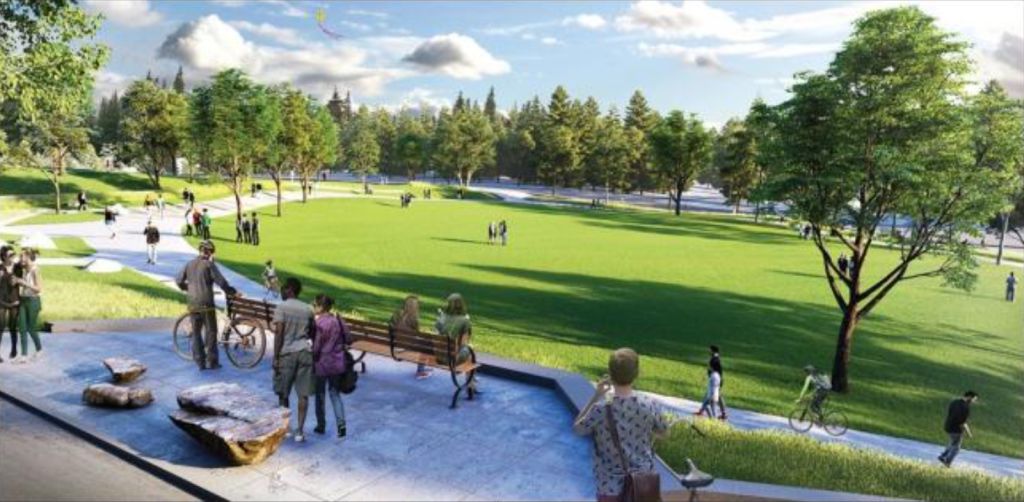
“This was obviously challenging news for us, because we believe we developed the Portage Bay project in the most cost-efficient way, given the proximity of the bridges and the lid structure, and also in the least impactful way, to the project neighbors and the travelling public,” Omar Jepperson, program administrator for the 520 bridge replacement project at WSDOT, told the senate transportation committee last week. For now, they’re hoping to get Skanska’s agreement to extend the timeframe to accept their $1.38 billion bid until March 7 — the end of the state legislative session and the latest date legislators would be able to appropriate the extra funding.
WSDOT has already received some pushback from Portage Bay neighbors concerned about impacts from construction of the project, asking the agency to reconsider use of temporary work bridges, even though exact construction methods would still be left to negotiations after any construction contract is awarded. A group of Seattle residents even went so far as to meet with the Medina City Council earlier this year, in the hopes of finding allies to create more pressure.
Along with contingency funding and cost increases for related 520 projects — including an additional $32 million for the Montlake Lid and $10 million for the connection to the express lanes at I-5 — the state needs to authorize an additional $725 million in funding for the overall program, including $71 million for the current biennial budget. That funding is on top of an added $406 million that the legislature allocated in the 2022 Move Ahead Washington transportation package that covered other cost increases for the 520 program.
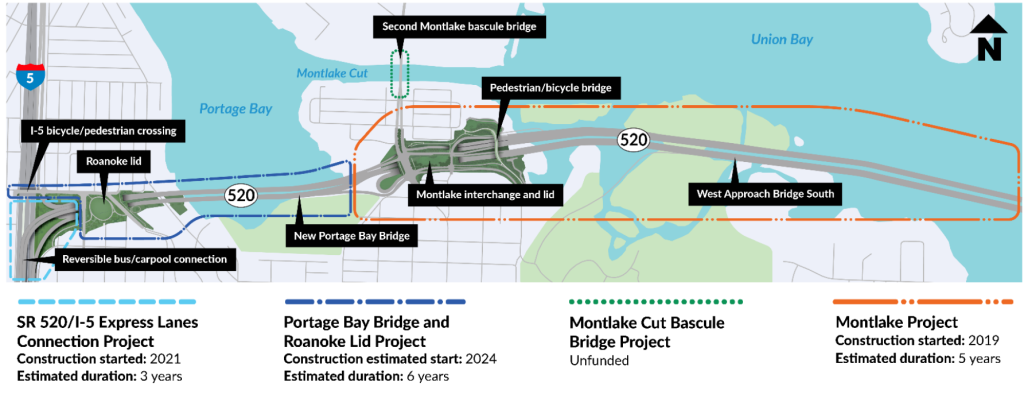
But while the funding needed to fill the gap in these 520-related projects is clearly badly needed elsewhere in the state transportation system, with current funding for maintenance and safety upgrades well below needed levels, the new Portage Bay Bridge and Roanoke Lid was set to bring transformative bike and pedestrian facilities along with the replacement of aging infrastructure — and those elements could end up being the first to be reassessed in the face of escalating costs.
The new set of Portage Bay bridge spans is set to bring an extension of the SR 520 multi-use path between Montlake and Roanoke Street in Capitol Hill, creating a multimodal connection between Seattle and the Eastside that has never exited before, and making it possible to bike between neighborhoods like Eastlake, Capitol Hill, Montlake, and others along the Burke-Gilman Trail much more easily.
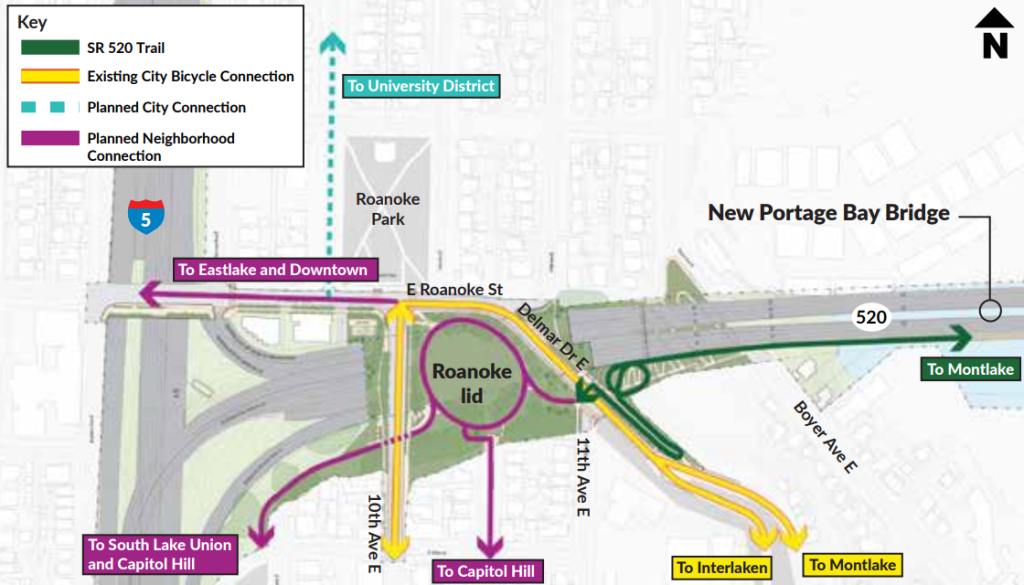
In addition, the new lid stitches back Seattle’s street grid in a way that creates other new connections, allowing someone on a bike to connect directly from Federal Avenue E in Capitol Hill, for example, with the connection to Eastlake or the North Capitol Hill greenway even if not connecting directly to the 520 Trail.
If WSDOT is not able to secure the additional funding to approve Skanska’s current bid, the agency has looked at a number of other options, which include just replacing the twin Portage Bay bridges and building the lid later, building just the north bridge and building the south bridge and lid later, and just replacing the north bridge and then pausing the entire project. Shutting down the entire program without replacing any of Portage Bay’s bridges or building a lid is also an option, but all of those carry undetermined risks for WSDOT, either legal or related to the safety of its structures, and could actually end up costing the state more money in the future.
Replacing the north bridge only would defer the extension of the 520 Trail, which is planned to be built alongside the south bridge in Portage Bay, with the existing underpass for the Bill Dawson Trail at Montlake to be used by riders switching to the north side across the lake.
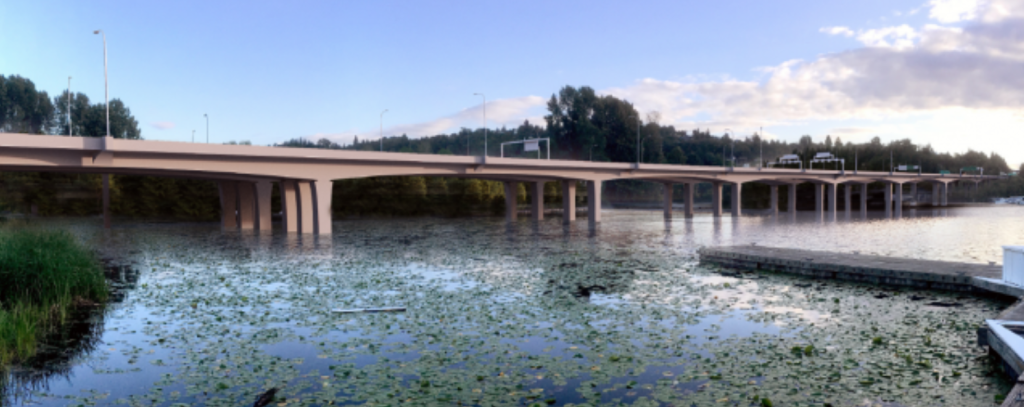
But in addition to delaying the entire 520 project — by approximately seven years, according to Jepperson — repackaging the project and bidding it out separately could end up costing even more than the expected shortfalls that WSDOT is facing right now. Doing the projects in separate phases could add $1 billion to $1.5 billion, on top of potentially exposing the highway agency to legal risks of not completing it sooner after plans were completed and sent out to bid.
State Senator Jamie Pedersen, who represents the 43rd legislative district where 520 is located and who has been an outspoken advocate for lidding I-5 as part of major maintenance expected on that highway through downtown Seattle in the coming years, offered a brief statement in response to this latest news. “I will be advocating for finding the resources to complete the project as promised to the communities,” he told The Urbanist.
The 520 projects aren’t the only source of overruns impacting the current transportation budget. This summer, WSDOT awarded a construction contract for an expansion of I-405 in Bothell, a project planned in conjunction with Sound Transit’s S2 Stride bus rapid transit line. The awarded amount was $775 million — $254 million more than anticipated. That overage was approved outside the legislative session, through coordination with the “four corners” transportation leaders in the state legislature: the Democratic chair and ranking Republican member of both the Senate and the House transportation committee. Policymakers cited the need to keep a project tied to Sound Transit projects moving forward. But those funds also need to be located during the upcoming sessions.
Those numbers may end up being dwarfed by cost increases impacting the state’s requirement to create new culverts to aid in fish passage, following a 2013 federal injunction that required WSDOT to speed up its work in this area. As the Seattle Times reported last month, getting another 10% of the state’s fish barriers opened up with new culverts could cost as much as $4 billion additional dollars — even more than the first 80% that the state has already completed.
Filling these budget holes poses a daunting task to transportation budget writers, but reassessing the lid portion of the 520 project, or its badly needed bike and pedestrian elements, could provide a precedent for not including these elements in future highway projects, setting the state back in terms of taking a broader look at how state transportation infrastructure benefits communities and also needs to account for its own impacts.
Ryan Packer has been writing for The Urbanist since 2015, and currently reports full-time as Contributing Editor. Their beats are transportation, land use, public space, traffic safety, and obscure community meetings. Packer has also reported for other regional outlets including BikePortland, Seattle Met, and PubliCola. They live in the Capitol Hill neighborhood of Seattle.

